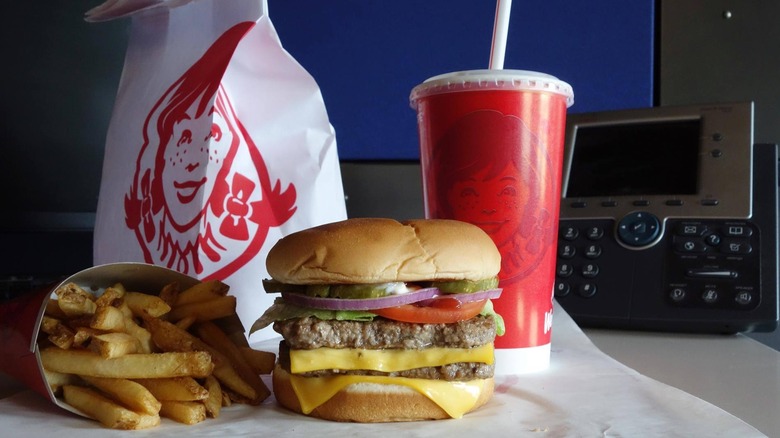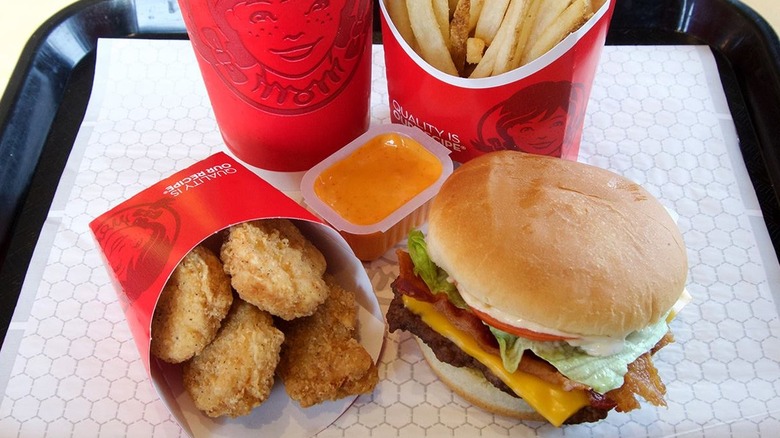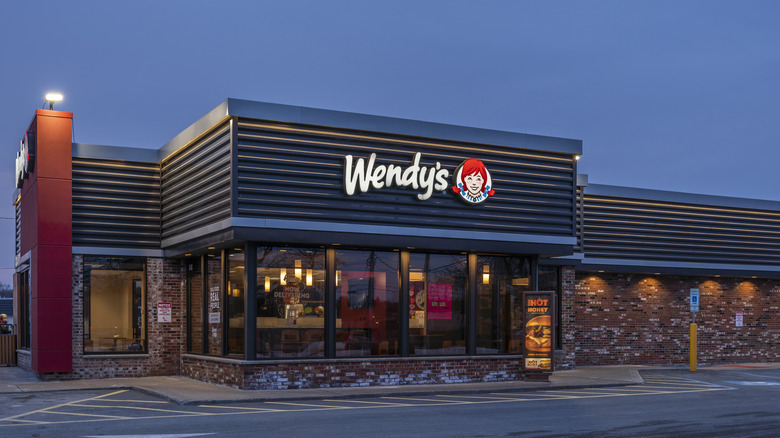Wendy's May Be Turning Its Menu Into A Burger Stock Exchange
Wendy's fans may drool over its Frosties or get wistful at the thought of the Pretzel Bacon Pub Burger, but the fast food chain's low prices are also a significant selling point. However, 2022 saw Wendy's prices increase more than other fast food restaurants, and many regular patrons started wondering where their money was going. After all, everything was getting more expensive, and everyone was trying to find ways to save a few bucks. The latest news involving Wendy's pricing may surprise even the most loyal Wendy's customers, but considering the competition in the industry, it may not be entirely unexpected.
Just like ordering an Uber during rush hour will cost you more money, Wendy's is considering introducing dynamic pricing, also known as surge pricing. During a recent call with analysts, the company's CEO and president, Kirk Tanner, announced, "Beginning as early as 2025, we will begin testing more enhanced features like dynamic pricing and daypart offerings along with AI-enabled menu changes and suggestive selling" (via Nation's Restaurant News). "Daypart offerings" refers to the business' proposed strategy of displaying different menu items for specific times of day, like breakfast, lunch, and dinner. It seems like AI will also have a role in implementing these changes, as the "AI-enabled menu changes" are more evidence of why we're going to be seeing a lot more AI in fast food. This is an industry all about speed and convenience, two words that embody AI.
What factors could affect the price of a burger?
Dynamic pricing is a simple concept. If you try to order your Baconator with fries and a Vanilla Frosty between 12:00 p.m. and 1:00 p.m., when the restaurant is busy, you will probably end up paying more than if you try to buy lunch during a quieter period such as 10:30 a.m. or 2:00 p.m. However, it is not just the time of day that dynamic pricing takes into account, there are many other external factors. Demand is an important element that has a strong correlation to time since everyone buys lunch at around the same time of day. Another potential factor is the season; It's safe to say that Wendy's sells more Frosties during the summer than the winter.
If both prices and menu items are constantly changing throughout the day, there is no way an old-school menu board could keep posting these changes. That's why, as a part of its plan, Wendy's is investing money to replace their menus with digital menu boards. CEO Kirk Tanner explained, "We are planning to invest approximately $20 million to roll out digital menu boards to all U.S. company-operated restaurants by the end of 2025" (via Nation's Restaurant News). This change means Wendy's can easily update their food items and pricing at any time throughout the day. While Wendy's has a planned timeline for turning its menu into a burger stock exchange, it's not the only restaurant considering it.
Dynamic pricing in the restaurant industry is an ongoing topic
Most people are familiar with surge pricing and its frustrations, whether requesting an Uber after a popular concert ends and finding the price has doubled or trying to purchase tickets to a show when they're $60 one day and $120 the next. Like many people online, your first reaction to Wendy's dynamic pricing might have been outrage, and Wendy's took notice of this. After the backlash that came with the announcement, Wendy's released a statement clarifying that it "would not raise prices when our customers are visiting us most" and instead would use the digital menu boards to display discounts, offers, and lower prices when the times of day are slow-going.
Regardless, Wendy's might not be the only restaurant to implement dynamic pricing. At the 2022 Restaurant Finance and Development Conference, a panel discussed the possible demand for dynamic pricing. Ashwin Kamlani is the cofounder of Juicer, a company that provides dynamic pricing technology for restaurants. He believes that the practice is something consumers have gotten used to, and with inflation and labor costs rising, dynamic pricing is perfect for restaurants. "We're not talking about doubling or tripling prices. This is about using data to make smarter decisions about pricing," Kamlani said (via Nation's Restaurant News).
While other chains have yet to discuss the implementation of surge pricing, Wendy's willingness to begin testing it will no doubt mean everyone will be watching to see what happens. If Wendy's sees success, fast food restaurants may become the next industry where dynamic pricing becomes commonplace.


